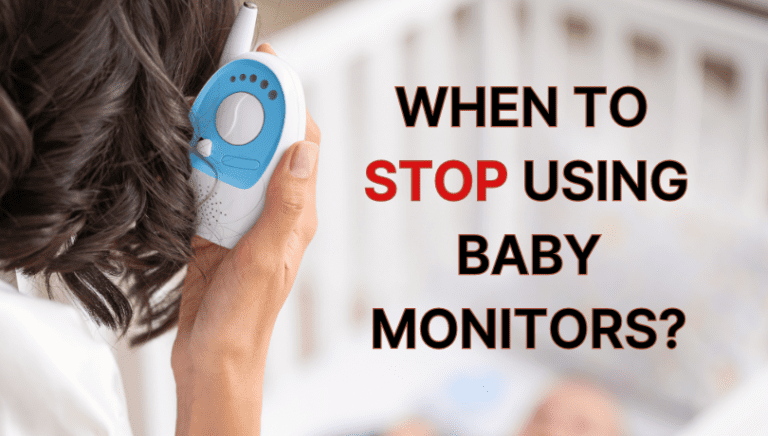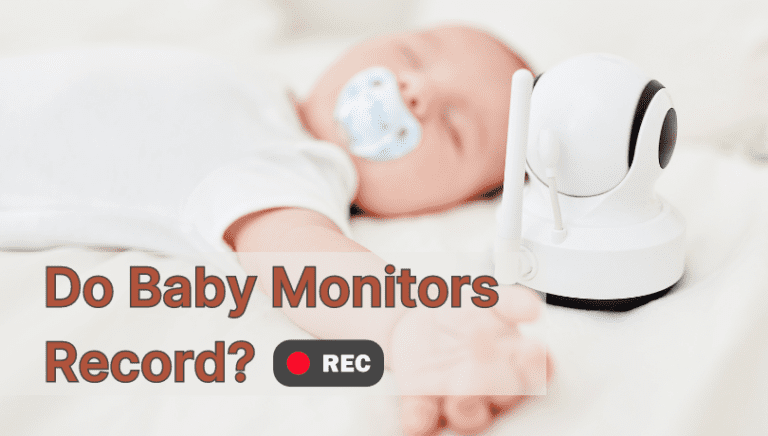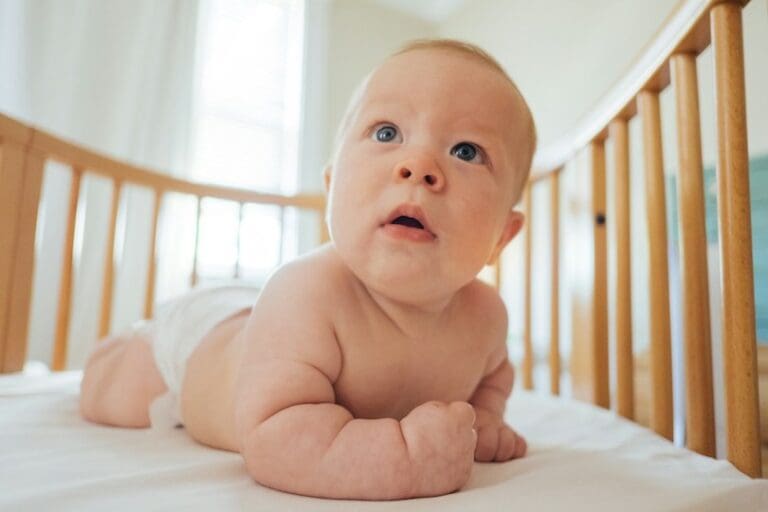Crib vs Bassinet: 6 Differences You Need To Know
Ah, I truly miss the old days. All my children are a lot older now, but I still vividly remember them trying to walk, their adorable rolls, and them sleeping in my arms. I also distinctly remember planning their nursery, setting up their cribs and bassinets, and all the baby shopping I did.
And I know, I know, that’s enough nostalgia for one day! So, the point is, I was torn between a crib vs bassinet for Fiona. Because at the time, I had my hands full with two other children, and we had space constraints since we were still renovating our home.
That was the first time I bought a bassinet, and it helped me learn more about the differences between a crib and a bassinet.
Maybe you’re dealing with super busy days right now too, so let me help you choose between a crib and a bassinet. I’ve answered some common questions parents have and key differences to know.
Table of Contents

What Is A Bassinet?
It’s a short, comfy bed, designed for newborns. These have a small basin-like structure with narrow side rails.
Compared to the traditional bassinet-like wooden cradles, newer bassinets are travel-friendly, easy to move, and attach or detach.

- Today, you can attach bassinets to the side of your bed or detach bassinets from a travel stroller and use them for small outings.
- Not only that, bassinets can rise to their highest level in a minute, getting rid of unnecessary back pain while bending down to pick up your child.
But, these are typically designed for babies only up to 4 or 6 months. So, they can’t be used for too long.
Further Reading: What is a Bassinet?
What Is A Crib?
Cribs are bigger-sized beds, giving your baby more space to roll, crawl, and sit up. It’s valuable for babies up to the age of 3–4 until they are ready to transition to a full-sized bed.
It comes with large rails and stays stable in one position. Furthermore, it comes in different types: standard, mini, convertible, and round cribs.
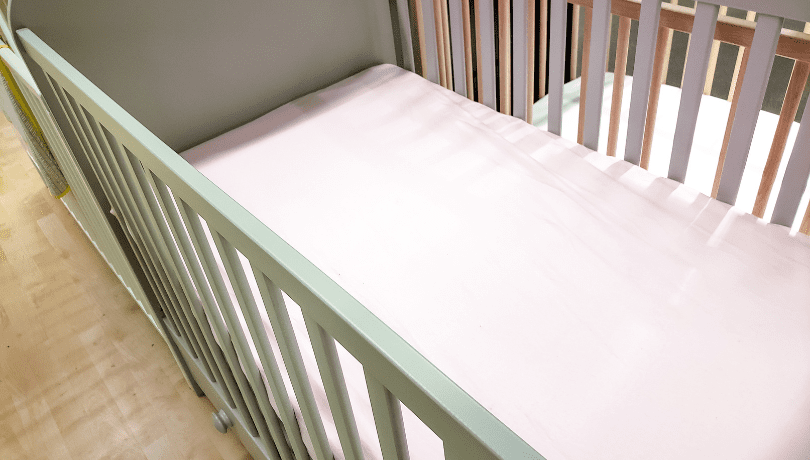
- Usually, parents prefer standard cribs, as it’s a single-time investment for all your baby’s sleeping needs.
- Mini cribs are smaller and can fit in less spacious rooms. Convertible cribs can easily transform into a toddler bed or more options.
Further Reading: Crib vs Mini-Crib
What is the Difference Between a Crib and a Bassinet?
Maintaining the Safe Sleep Environment
Cribs and bassinets are cleared to be a safe sleep environment for babies. But, you do need to check them often for wear and tear.
- Check your crib for loose screws, splinters, and other signs of wear to keep your baby safe. And while you’re at it, keep an eye on the crib mattress too, ensuring they’re free from bacteria or mold.
- With bassinets, you’ll need to inspect for wobbliness, loose screws, and other structure issues since they are more lightweight. And please be careful when you travel with it.
Crib vs Bassinet: FAQs
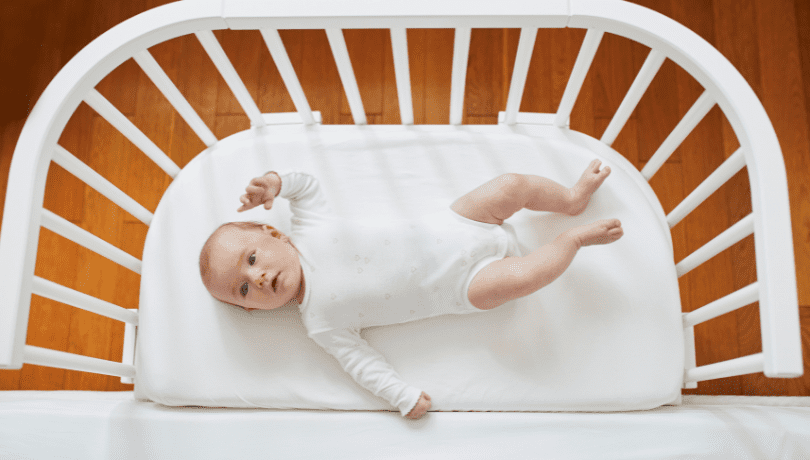
1. Why Use a Bassinet Instead Of a Crib?
Bassinets have good benefits that make them stand out!
– Size: Sure, they can fit better in houses with space constraints. But also, babies like more cozy and snug spaces during the early months. After all, they spend 9 months in a mother’s womb, so, it takes time for them to get familiar with broader spaces.
– Proximity: Bassinets are lightweight and portable, making it easy to keep your baby close, whether it’s for daytime naps or nighttime sleep. This proximity has made my nighttime feeds and soothing much easier. If you’re seeking more ways to keep your baby comfortable and close during the day, a padded baby carrier is a fantastic option for hands-free comfort.
– Monitoring: With a bassinet placed next to your bed, it’s easier to keep an eye and ear on your baby through the night. This closeness can provide peace of mind for parents, especially during the early months.
With all that being said, eventually you do have to switch them from a bassinet to a crib. I remember my Fiona not really liking the crib at first. So, please take it slow and get them used to the crib gradually.
Recommended Reading: When to Move Baby Out of Bassinets
2. Do Babies Sleep Better In A Bassinet Or Crib?
It all depends on how comfortable they are in their sleeping space, really, and every baby is different.
On one side, Fiona loved to sleep in bassinets, but not cribs initially.
On the other hand, Avery was comfortable in her crib and rolled over a lot sooner, so, she needed a wider space for comfy sleep.
Similarly, your baby might show you signals and you must check for that often.
3. Bassinet Or Straight To A Crib?
You can choose either option! Both bassinets and cribs are safe sleep options for babies. All you need to figure out is what will suit better for your home’s needs.
– If you’re tight on budget and don’t have a nursery prepared, go for a bassinet.
– If you’re looking for anything long-term (a one-time investment), choosing cribs would be a smart choice.
Note: Use bassinets until your baby grows up to 4 months or he/she starts taking rolls. After that, it’s straight to a crib!
4. Does A Newborn Need Both A Bassinet And A Crib?
Nope. It’s not mandatory to have both. But, if you get a bassinet, you do have to eventually transition them to a crib.
Cribs are suitable from when your baby is a newborn until they become a toddler (sometimes even longer if you choose convertible cribs). A crib is wide and takes up more space, but it can protect your baby better from falls or rolls.
Bassinets can be used only until your baby reaches 4 months old or starts to roll over. But, they are portable and smaller, helping you keep your baby close to you.
And you can choose one wisely, knowing the differences between the two.
Crib Vs. Bassinet: Wrapping Things Up
When choosing between a crib vs bassinet, consider the size, stability, and durability differences. Usually, bassinets are smaller and fit in tighter spaces, while cribs have their standard size.
Both cribs and bassinets are approved by AAP, so, as long as you follow basic safety measures, you needn’t worry too much. While cribs are the better long-term investment, bassinets also offer the added benefit of proximity and monitoring during the initial days. As a mother, this little convenience could lighten the burden of your daily hustle.
And whatever you choose, treasure the little moments, especially in those early months!

